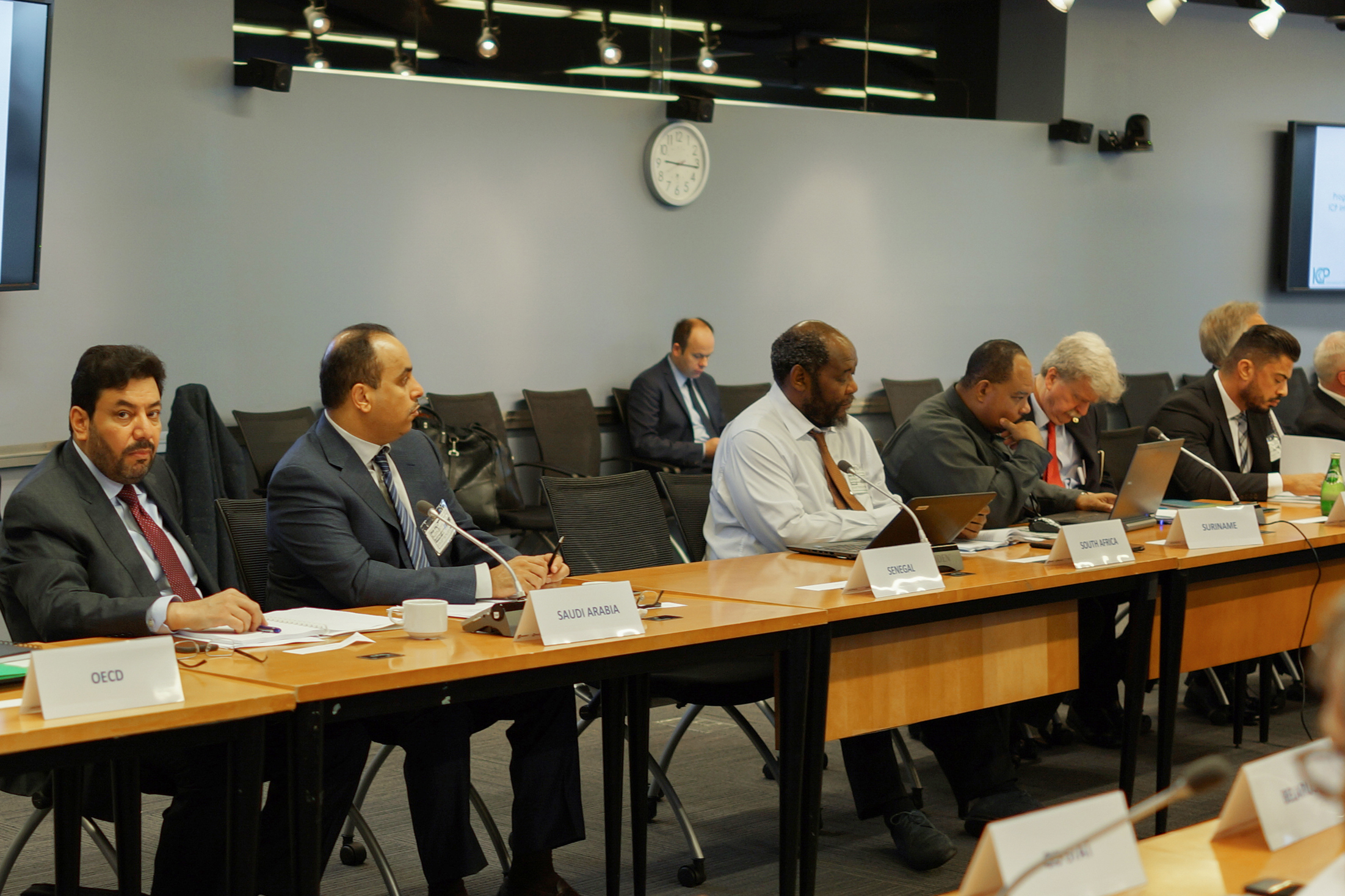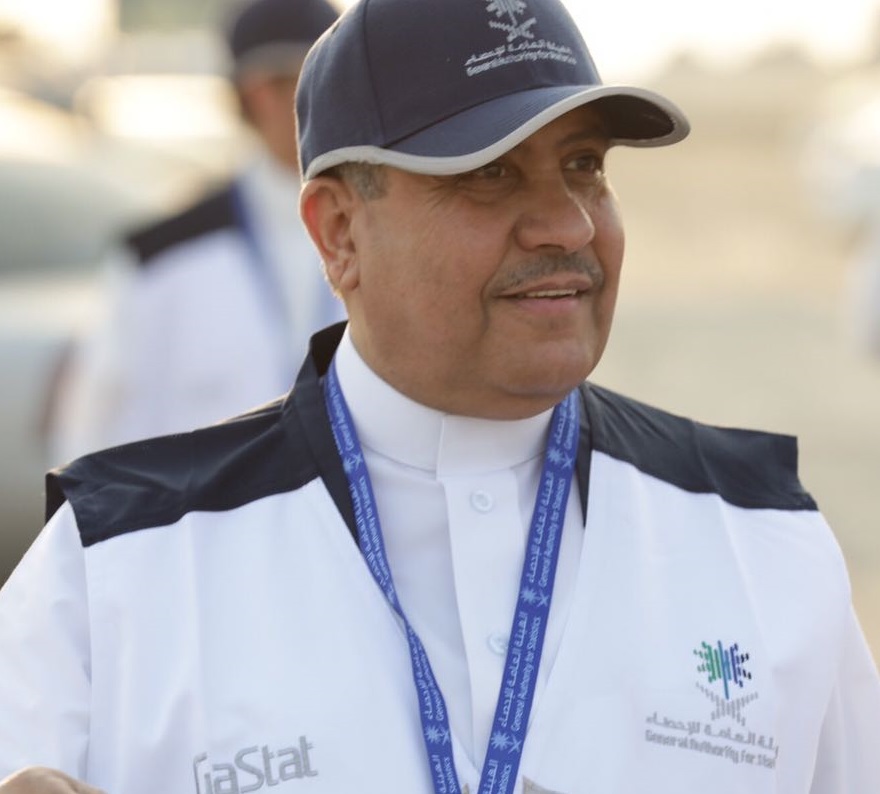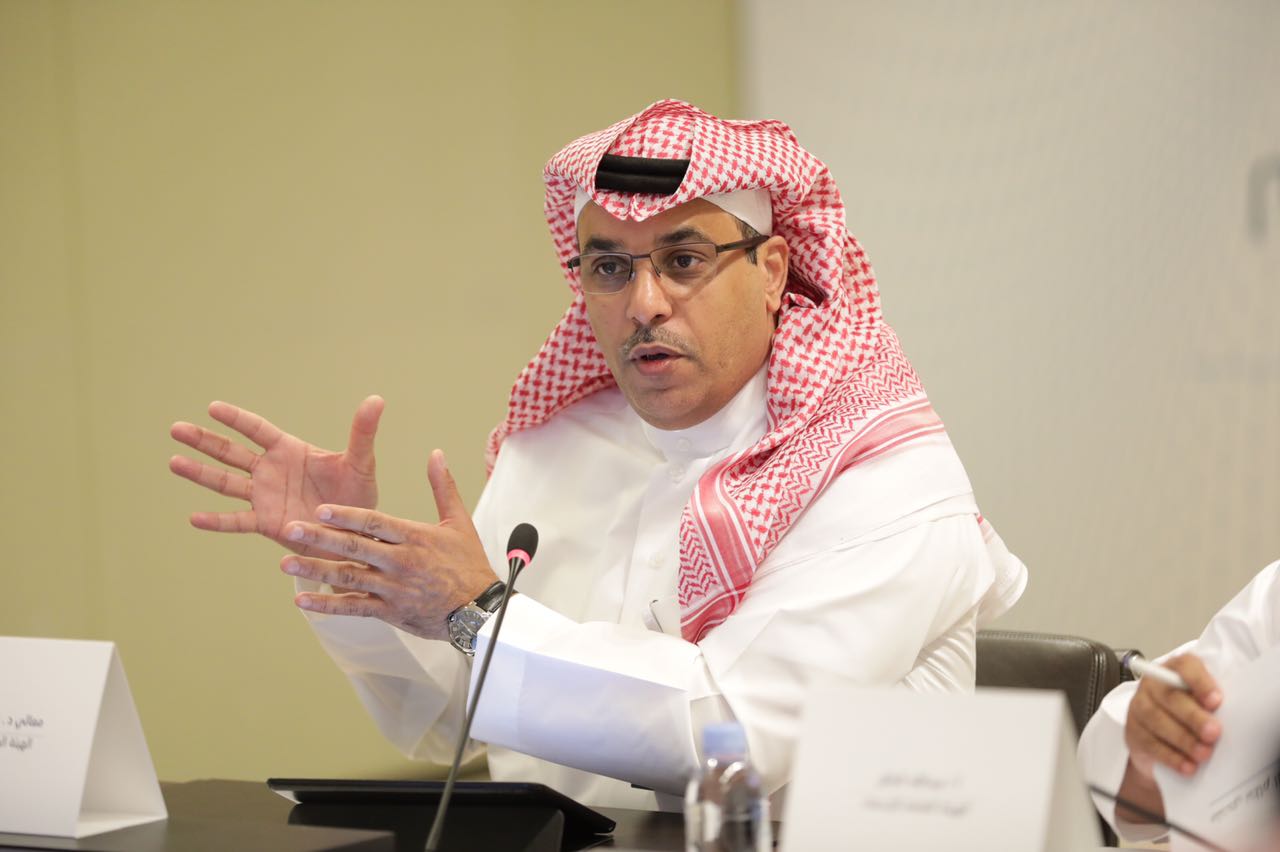GaStat: The Saudi unemployment rate is 12.8% in the 2nd Quarter (2017)
Labor Market Bulletin Includes 67 Statistical indicators
GaStat: The Saudi unemployment rate is 12.8% in the 2nd Quarter (2017)
The General authority for Statistics (GaStat) published the Labor Market Bulletin for the second quarter of 2017 on Sunday Muharram 11th,1439H (Corresponding to October 1st,2017) which provides comprehensive data and indicators on the labor market in the Kingdom from April 1st to June 30th, 2017 (Corresponding to Rajab 15th to Shawwal 6th, 1438H) to support decision and policy makers regarding labor force. It also contributes in building a database on the labor market in the Kingdom that can be used to prepare and plan future social and economic development programs.
The quarterly bulletin includes 67 statistical indicators which contain data and indicators from the Labor Force Survey estimates and labor market data from the administrative records of the relevant entities (Ministry of Labor and Social Development, Ministry of Civil Service, General Organization for Social Insurance(GOSI), Human Resources Development Fund and National Information Center) applying international standards in this area.
The results of the bulletin for the second quarter of 2017 indicated that the total number of employees from the data of administrative records in the Kingdom of Saudi Arabia reached (13,841,158) individuals compared to (13,889,137) for the first quarter of 2017.
According to the results of the bulletin also from the data of administrative records in the government agencies for the second quarter of 2017, the total number of Saudis seeking work reached (1,075,933) individuals, (216,352) of them are males and (859,581) are females.
The results also showed that the highest percentage of Saudis seeking employment was among the age group (25-29), which is (34.2%). Also according to the results of the administrative records data, nearly half of the Saudi job seekers hold university degrees reaching (50.5%).
The results of the bulletin showed that the unemployment rate in Saudi Arabia for the Saudi population (15 years and over) from the Labor Force Survey estimates for the second quarter 2017 reached (12.8%), (7.4%) are males and (33.1%) are females. And the unemployment rate in the Kingdom for the total population (15 years and over) is (6.0%), (3.3%) are males and (22.9%) are females.
The results also showed that (11.6%) of the unemployed Saudis had previously worked, and (32.9%) of unemployed Saudis who had previously worked left their jobs due to dismissal from the employer. The survey results also showed that (9.6%) of unemployed Saudis have already been trained.
Regarding the economic activity rate of total population (15 years and over) it reached (54.2%), divided between males (78.2%) and females (18.7%). In its bulletin, GaStat also explained that the economic activity rate for total Saudi population (15 years and over) reached (40.3%).
The bulletin included a large number of detailed data on workers according to the regulations they are subject to, nationality, sex, age, administrative region and educational level, as well as data for job seekers, average monthly wages, working hours and domestic workers.
For more details, you can view the bulletin through Gastat’s official website: www.stats.gov.sa

د. التخيفي : تميز المملكة العربية السعودية في الإحصاء قادها لعضوية المجلس والمشاركة في اجتماعاته الدورية
UN International Comparison Program board of directors holds second meeting
Dr. Altekhaifi: KSA's distinctive work at statistics leads to council membership and participation in recurring meetings
Saudi Arabia has participated at the second meeting of the board of directors of the International Comparison Program (ICP), which was held at Washington D.C. early this week. His Excellency, president of the General Authority for Statistics, Dr. Fahad bin Sulaiman Altekhaifi, confirmed that the program’s work and results will help shape policies for global comparison to support statistical products of the participating countries. It will also enable the General Authority for Statistics to access the best global practices for statistics for the purpose of improving and developing the statistical work. Also, it will raise the quality of the data, which will reflect positively on the decisions for development that rely mainly on statistics.
On the other hand, his excellency Dr. Altekhaifi pointed out that the board of directors, which has 11 countries including Saudi Arabia, which represents west Asia, has looked into the progress made when implementing the 2017 cycle in the participating areas. The council also specified a list of research topics including, implementing a rolling survey approach and building Purchasing Power Parity (PPP) time series, integrating ICP and Consumer Price Index (CPI) activities, Streamlining the process of establishing product lists and the use of importance indicators, improving the availability and quality of input data for rents, government services, and construction, streamline the use of productivity adjustments for government services, fine tuning global linking procedures, quality assurance of resulting PPPs and measures of reliability and other topics related to statistical work.
Dr. Altekhaifi added that the ICP selecting of Saudi Arabia for the membership at the 2017-2019 cycle came as a result of the positive role of the General Authority for Statistics in different statistical programs organized by the UN. It also confirmed the kingdom’s effective role on the global map of statistics. Moreover, it reflects the results of the strategic transformation of the kingdom’s Statistic sector, which the leadership cares for and supports due to its role in aiding the national development decisions. The ICP, which is under the supervision of the World Bank, is a partnership program for statistics on a global level. It is based on a statistical system that is connected with economic analysis. It uses statistical methods to derive the necessary data to calculate the PPP for about 200 countries and economies worldwide. It will facilitate the use of PPP as currency converters. That will allow for the comparison of the total economic indicators and the economic situations of countries worldwide.
It is noteworthy to mention that the ICP board of directors is compiled of executives, chairpersons, and leading experts in 11 statistical devices participating in the program. They are distributed according to the regional areas: Africa, Asia, Pacific Islands, Latin America, the Caribbean, West Asia, Commonwealth of Independence States, European Union, non-European Union States, members of the organization for Economic Cooperation and Development, representatives of the International Monetary Fund, World Bank, UN Statistics Division, and the Inter-Agency Coordination Group.
GaStat Launches the “Statistical Calendar” for 1438H Hajj Season
More than 450 Statisticians Started this morning
GaStat Launches the “Statistical Calendar” for 1438H Hajj Season
Through its official website www.stats.gov.sa, the General Authority for statistics (GaStat) launched the statistical calendar for the 1438H Hajj season. It shows the publishing dates of services provided by the Kingdom to pilgrims, in addition to the statistics of domestic and international pilgrims.
GaStat official spokesman, Mr. Taiseer Almofarrej, explained that the statistical calendar with its content, from statistics and numbers, aims to show the efforts made to pilgrims from more than 45 public and private entities. On the second day of the current month of Dhu al-Hijjah, the statistics of services provided to pilgrims from health and medical services, public services, transportation sector services and telecommunication services will be announced respectively. Then, the number of domestic and international pilgrims arriving to Makkah will be published and updated daily until the evening of the 9th day of Dhu Al-Hijjah when the total number of pilgrims will be announced. Mr. Almofarrej added that GaStat will issue the detailed bulletin of Hajj statistics the morning of Eied day (10 Dhul Al-Hijja ), he also added that all information will be available at GaStat official website on schedule.
On the other hand, GaStat official spokesman explained that the enumeration of pilgrims coming to Makkah has started the morning of Wednesday (1st of Dhu Al-Hijjah), by more than 450 statisticians, administrative and technicians from GaStat. They are distributed on all main centers in Makkah, Medina, Jeddah and Alta’if, and they work 24 hours until the sunset of Arafah day, next Thursday (9th of Dhu Al-HIjjah).
GaStat called all pilgrims coming to Makkah for Hajj to provide the necessary statistical data required in all Pilgrims enumeration centers this year which are (Makkah/Jeddah Highway) Road , (Makkah/old Jeddah)Road, Altan’eim center(the connection road between Medina and Makkah), AlShrai’e center (the connection road between Makkah city and Alta’if city through AlSail), Alkar center (the connection road between Makkah and Alta’if through Alhada), and the Southern center ( Allaith -Jazan road near Als’adeiah village) in addition to the Hajj statistics supportive centers in Jeddah at King Abdulaziz international airport, mass transportation stations, and other locations in Jeddah, Medina center (Abiar Ali and ‘Ashirah), and Alta’if center (Alsail Alkabeer).

" الإحصاء ": الإعلان النهائي لأعداد حجاج 1438 هـ بعد مغيب شمس يوم عرفة

قرابة 24 مليون حاج خلال عشر سنوات تشرفت بخدمتهم المملكة العربية السعودية
GaStat Enumerates Pilgrims Every Year
Saudi Arabia has been honored to serve nearly 24 million pilgrims in 10 years
According to the official statistics of the General Authority for Statistics (GaStat), the total number of pilgrims that Saudi Arabia has been honored to serve during the last ten years has reached 23,935,354 pilgrims. The last Hajj season (1437H) recorded the lowest number of pilgrims during the last ten years as it reached 1,862,909 pilgrims. While the year (1433H) recorded the highest number of pilgrims during the last ten years as it reached 3,161,573 pilgrims.
The official spokesman of Gastat, Mr.Taiseer Almofarrej, explained that the task of pilgrims enumeration every years is one of the tasks that Gastat has the honor of. It started since 1390H since Gastat was called (the Central Department of statistics), in order to provide accurate information that helps all state agencies in planning and development of everything related to serving Hajj visitors. This mission continued during all these years to witness developments and enhancements in the enumeration techniques every year to be more accurate and comprehensive. Mr. Almofarrej added that the Hajj statistics program aims at the completion of all future planning programs to ensure providing the necessary services needed by the guest of Makkah, whether social, health, security, food, or transportation services. This is done through using a time series of accurate data about the number of pilgrims, in addition to the estimation of labor forces needed for providing the necessary services for pilgrims during Hajj season every year. The data and number of pilgrims is also used by relevant systems who studies the preparations and main facilities in Makkah city and holy places, and take it into consideration when preparing the necessary plans. In addition, accurate data and information about Hajj statistics is provided to researchers, students, and individuals who are interested in this field. The data is also used in the evaluation of activities and events made by relevant entities who serve pilgrims, in addition to identify the method of arrival of domestic and international pilgrims.
The official spokesman stressed that GaStat will be announcing the number of pilgrims periodically starting from the 1st of Dhu al-Hijjah. GaStat will also announce the final and official number of pilgrims on the evening of the ninth day of Dhu al-Hijjah through the Hajj statistics bulletin. The Bulletin will include detailed results about: number of domestic pilgrims, international pilgrims, pilgrims by gender, pilgrims by nationality, pilgrims by arrival destination, number of cars carrying pilgrims by type, and other detailed data.
It is worth mentioning that the number of pilgrims in the last ten years exceeded 3 Million pilgrims in one time, and it exceeded 6 Million pilgrims 6 times. The number was lower than 2 Million in 3 Hajj seasons, and last year was the lowest according to the following table:

الهيئة العامة للإحصاء تبدأ الخميس المقبل بزيارة أكثر من 57 ألف أسرة
In cooperation with the Communication and Information Technology Commission and the General Sport Authority
GaStat starts to visit more than 57,000 households next Thursday
The General Authority of Statistics (GaStat) will start next Thursday, 19 Shawwal 1438H (13 June 2017), to visit more than 57,000 households in all regions of the Kingdom in coopereation with the Communication and Information Technology Commission and the General Sport Authority to conduct 3 household surveys: the survey of ICT’s access and use for households and individuals, sports survey for households, and the labour force survey for the third quarter. GaStat calls upon all citizens and residents to cooperate with the statisticians working in the field in 13 regions of the Kingdom including their cities and provinces. The work of than 450 field researcher will continue until 25 Dhu al-Qa’dah 1438 H (17 august 2017).
GaStat official spokesman, Mr. Taiseer Almofarrej, explained that the household sport survey is one of the requirements of the Saudi Vision 2030 in cooperation with the General Sport Authority. It aims to provide recent indicators about the extent of playing sports for households. Through its results, stakeholders will learn about the reasons for playing sports or not and they will get updated statistics about the relationship of households with sports. It will also provide a comprehensive picture on the size of community participation in sports and physical activity. In addition, it will provide data on the ratio of sports practitioners within the household who practice sports on a regular basis, at least once a week. It also provides data on the percentage of sports practitioners in public facilities, clubs or sports centres, and the number of times a person is engaged in sports during the week, and the reasons why a person may not exercise.
Mr. Almofarrej added that this survey coincides with the Labour Force Survey for the third quarter of this year which aims to provide detailed data about national labour force, measure the rates of employment and unemployment, provide data on employed and unemployed individuals, identifying the average monthly wages of the workers, provide data on the average weekly actual working hours by occupation, and economic activity of workers, and data on formal and informal workers. The results will be published in the Labour Market Bulletin, which was recently launched by GaStat.
Regarding the survey of ICT’s access and use for individuals and households, GaStat’s official spokesman said that in cooperation with the Communication and Information Technology Commission aims at providing updated data and indicators on the extent of household and individual’s access to information and communication technologies. It includes: the availability of communication and information technology devices, the extent of using mail services by households and household access to ICTs. The survey will also provide individual data including: the extent to which information technologies are used for individuals, age groups, educational and occupational status, difficulties, places of use and reasons for not using ICTs.
On the other hand, Mr. Taiseer Almofarrej confirmed that the GaStat has been keen to involve all relevant parties from data producers and users in developing its statistical products from creation to publishing through integrated partnership. A training program was recently held for the supervisors of these surveys, in which the Communications and Information Technology Commission and the General Sport Authority has participated.
GaStat has confirmed that all information will be treated as an information basis which is reliable and can be used by development decision-makers in all relevant government entities that will serve the interest of citizens and residents. Gastat also has mentioned that al statistical researchers carry official badges and they are officially authorized to collect data to be kept confidential in accordance with the general statistics system issued by the Council of Ministers. GaStat also made available on its official website www.stats.gov.sa the opportunity for students and interested individuals to view field search forms on which the data will be collected. All households and establishments may inquire through the toll free number 8001240440 about this work or other coming work.

مجلس الوزراء يوافق على التعاون الإحصائي مع هولندا وكوريا
Administrative-based Census and Centralized Data System Included
Cabinet Okays Statistical Cooperation with Netherlands and Korea
As part of its continuous support for statistical sector in Saudi Arabia, the Cabinet has approved in its sessions held on Ramadan 3rd and 17th respectively, the mandate to the Minister of Economy and Planning or his nominee for holding discussions with the Dutch and Korean sides on statistical development, and to sign memorandums of understanding (MoU) with them in this regard.
His Excellency President of the General Authority for Statistics (GAStat) Dr. Fahad Sulaiman Altekhaifi hailed the decision stressing:
“The statistics sector in Saudi Arabia receives ongoing support from our leaders at all levels; establishing the importance of statistics in development. These agreements aim to develop our statistical endeavors based on the world’s best practices in the field. Also, our discussions with the Dutch side will address developing modern mechanisms to implement register-based census in compliance with the internationally recognized standards, including a defined statistical approach to run censuses, document data, and to store them in statistical archives. Also, this includes developing the necessary technical tools to create a comprehensive system from census databases, and leverage them in statistical surveys and studies, those implemented by GAStat, public or private agencies. The bilateral cooperation between KSA and Netherlands enhances sharing statistical awareness programs to ensure community participation and to share success stories, to boost the exchange of expertise between both countries, and to take part in statistics-related training courses, conferences, forums, seminars and workshops."
As far as cooperation with Korea is concerned, GAStat President noted: “It features the development of technical mechanisms to collect and publish statistics in accordance with the internationally recognized standards, to identify basics needed to create a comprehensive system using various statistical databases and to share expertise as to the requirements to build a centralized data center, which will automatically be connected to all public agencies. Also, this is meant to secure the tools needed to activate these centers, and to develop public policies and mechanisms to provide statistics-based technical and advisory services to both public and private entities.
It should be noted that GAStat has undertaken a series of preparatory steps with several local and international organizations towards finalizing the preparations for the (1440H – 2020) census, which will be the first register-based census using administrative records (civil registration number, national ID number, resident ID number), as well as the national home address. Unlike earlier censuses, this census features a comprehensive electronic connectivity with a number of stakeholders, including the National Information Center, Ministry of Education, Ministry of Housing, the Saudi Post, as well as various sectors in concern with the citizen, resident and housing data.

الهيئة العامة للإحصاء تناقش مسودة نظام الإحصاءات العامة
In Collaboration with 19 Government Entities to Develop the Statistical Sector
GaStat Discusses the General Statistics system draft
Within the framework of activating the statistical sector in the Kingdom of Saudi Arabia, the General Authority for Statistics (GaStat) held a workshop on Wednesday, 28 Sha’ban 1438H corresponding to 24 May 2017 with 19 government entities and specialized consultation bodies. The workshop was held to discuss the draft of the general statistics system in preparation for its submission to GaStat’s board of directors then for the concerned entities for approval.
H.E. Dr. Fahad Altekhaifi, GaStat President, expressed his gratitude to the workshop participants and asserted that developing the statistical sector is a joint responsibility between relevant entities. He also added that the aim of this workshop is to ensure that the proposed system draft meets all requirements which maximizes its benefit. Furthermore, he explained that the proposed system draft is comprehensive and keeps up with the latest developments in statistical systems in order to activate statistical work and deepen its impact on planning and enhancing statistical awareness. It also regulates the relationship between GaStat, as a supervisor and organizer of the statistical sector in Saudi Arabia, and all constituents of the statistical sector which includes beside GaStat; statistical administrative units in all government entities, private sector and academic sector.
GaStat’s President also confirmed that the current system provides a solid structure for statistical work with the amendments that have been made over the past years. The regulation which was issued by the Council of Ministers Decision No. 11 issued in Muharram 13th, 1437H enhanced and completed the process of developing statistical work. The regulation included a number of subjects that covered a group of regulatory provisions and the most important of these subjects: emphasizing that the Authority has a public juridical personality, and a financial and administrative independence, it is the entity in charge of statistical affairs, the only official reference to implement statistical work, and it’s the only technical supervisor and regulator of statistical work, it is managed by a board of directors which by the regulation has the powers and authority on the statistical sector and its components in the Kingdom of Saudi Arabia. The regulation gave the Authority the task of establishing a permanent coordinating committee. It also gave it the responsibility of establishing a central system for information which is connecting electronically with all concerned entities. In addition to implementing statistical work, the regulation also assigned other tasks to the Authority which include: applying recognised international standards which include statistical work methodology, survey design and implementation, conducting research and studies, analyse data and information, all information and data documentation work, collecting statistical data and information that covers all aspects of life in Saudi Arabia from its different sources and classify it and section it, either from surveys and censuses or from administrative records in public entities and private establishments, analyse this data and extract its indicators, prepare evidences and national statistical classifications according to international standards, using it and developing whenever needed, prepare statistical bulletins and reports of surveys and research and publish it. The regulation also gave the Authority the right to provide statistical services, conduct surveys, prepare statistical research and studies, provide data from its databases to establishments and business sector in a commercial manner and shall benefit from its financial revenues in financing statistical and information services provided. In addition, it is responsible of transmitting knowledge and provide recommendations to public entities to develop all information system and statistical work methodology to achieve a comprehensive, accurate and unified statistical system and to develop public awareness of the importance of statistics, and to monitor and follow up all published data on the Kingdom of Saudi Arabia with the competent regional and international bodies and coordination with the concerned entities. This regulation reflects the leadership's keenness to develop the main infrastructure of all development decisions considering that the statistical products and services given by GaStat is a solid base to support all national development decisions and support policymakers with information that is considered as the compass of development work, which makes this regulation an added value at the development level on one hand and the activation of the national strategy for statistical development on the other.

" الإحصاء" : انخفاض مؤشر أسعار العقارات للربع الأول من 2017
Based on ministry of justice registry data
GaStat launches real estate index indicator
On Monday 27th of Rajab 1438 H corresponding to 24th of April 2017, GaStat launched the Saudi real estate index indicator. This indicator is based on available registry data of the ministry of justice which are about real estate transactions . GaStat described this indicator as an essential tool that supports entities which make economic and statistical decisions associated with real estate price movements and future expectations during different periods of time. The indicator includes three main sectors composed of many real estate classes: residential sector ( piece of land, building, villa, apartment, and house) , commercial sector (piece of land, building, shop, and commercial center), and agricultural sector ( agricultural lands).
Real estate price index indicator showed a decrease in the Saudi real estate prices during the first quarter of 2017. The indicator registered a decrease of (2.3%) compared to the previous quarter (fourth quarter of 2016). Whereas it registered a decrease of (9.9%) during the first quarter of 2017 compared to the same quarter of last year.
The report attributed the decrease in the first quarter of 2017 (compared to the previous quarter) to the decrease in all composing sectors: commercial sector (1.8%), residential sector (2.6%), and agricultural sector (0.3%).
On the other hand, the decrease in the first quarter of 2017 (compared to the same quarter of 2016) is attributed to the decrease in all composing sectors: commercial sector (11.7%), residential sector (9.5%), and agricultural sector (1.3%).
GaStat indicated in a workshop ,held in " Restatex " exhibition in Riyadh city, that : as an official reference of statistics and an organizer of the statistical sector in Saudi Arabia, one of Gastat tasks is following up the price movement of real estate composing units and recording the values of their transactions all over Saudi Arabia. In addition to monitoring their changes from time to time through the new statistical product " real estate price index" which relies on the data provided by ministry of justice. This represents the integration and cooperation between the different government entities which aim at moving sustainable development forward.
GaStat also stated that the new statistical product aims at founding distinct real estate statistical indicators that measure the Saudi real estate market performance and fill the gap of data in this sector. It is considered an essential tool that supports entities which make economic decisions in this field. This product's data benefit those who are interested in the economic and statistical analysis of real estate prices and the future expectations during different periods of time. GaStat has issued a complete bulletin about this index and its details.
